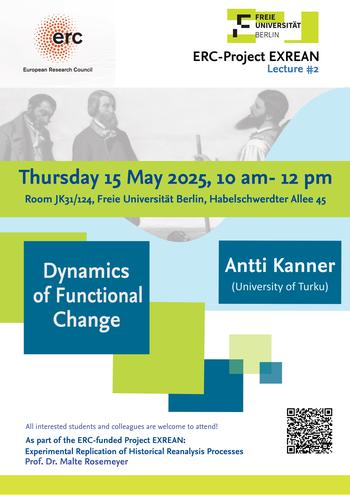In the talk will be presented the planning for a project that develops methods to track linguistic changes’ spread within language and withing speech community in historical corpora using large language models and statistical methods from ecology.
Concentrating on Finnish language on the turn of the 20th century, the data comes from National Library of Finland’s Newspaper Collection and covers years 1860 – 1940. This marks a period of rapid development of modern standard Finnish.
The project concentrates on functional (semantic and grammatical) changes and conceptualizes them as changes in distributional habitats of linguistic expressions, as expressed by contextual vectors of language models.. This approach has many plausible upsides, such as being able to detect change that have been interrupted or even reversed and enabling statistical comparisons between different types of changes. Further, it will allow studying interactions, such as causal relations, between individual changes.
Antti Kanner is a researcher in the fields of Finnish language and digital humanities, currently serving as a postdoctoral researcher at the University of Turku in the Human Diversity consortium. He earned his Doctor of Philosophy degree from the University of Helsinki in 2022, where he focused on the intersections of linguistic semantic theories, and digital methodologies.
Kanner has actively contributed to several research projects, including the study of intertextuality and thematic networks in Finnic oral poetry and the exploration of power dynamics in media narratives. His expertise extends to quantitative linguistics, with a particular emphasis on historical semantics and public discourse in Finland.
Time & Location
May 15, 2025 | 10:00 AM c.t. - 12:00 PM
Raum JK 31/124
Freie Universität Berlin
Habelschwerdter Allee 45 (Rostlaube)
Keywords
- semantic functional changes, grammatical functional changes, changes in distributional habitats of linguistic expressions, contextual vectors of language models
